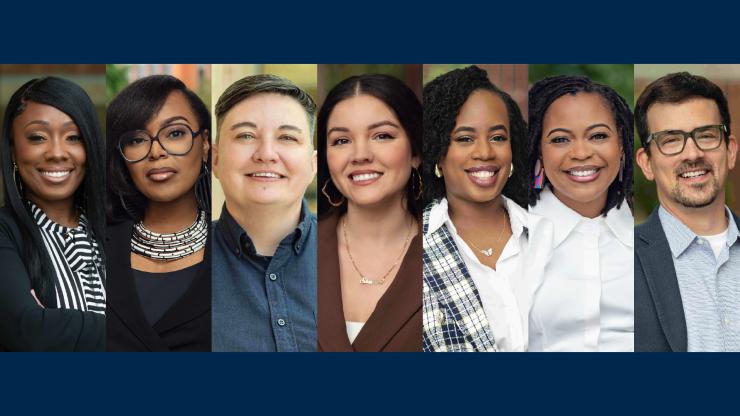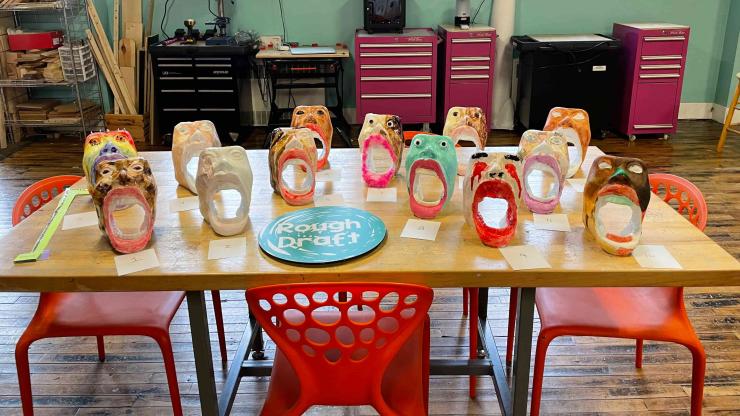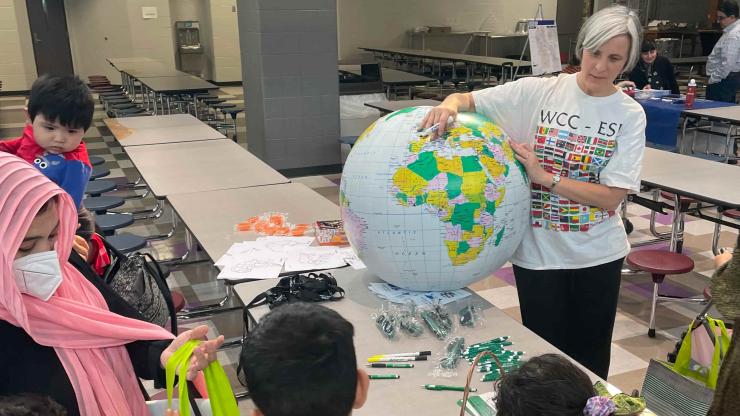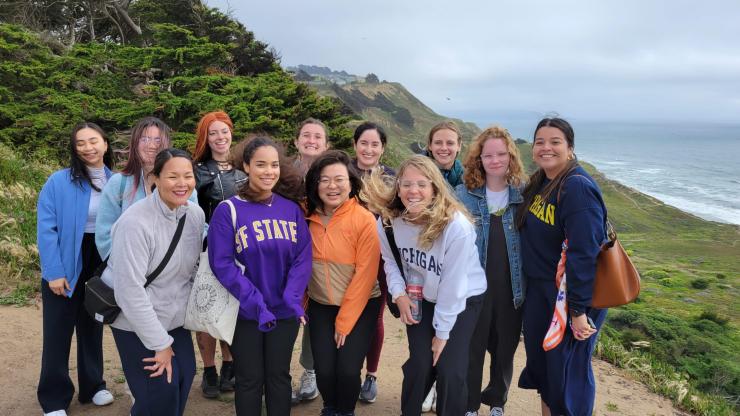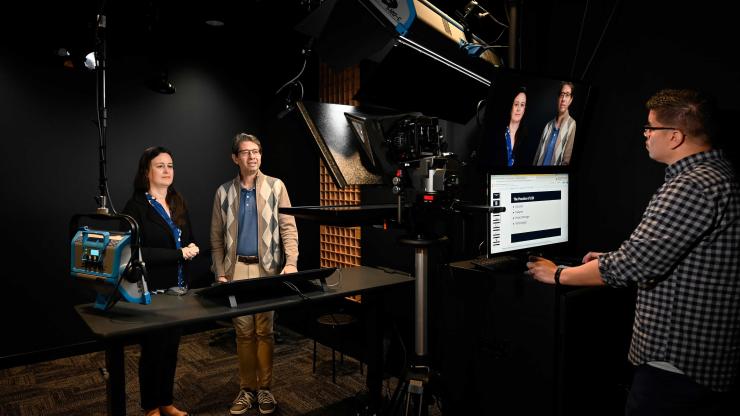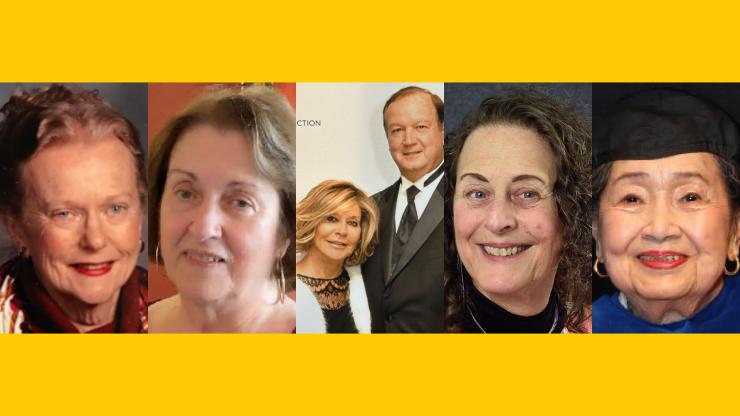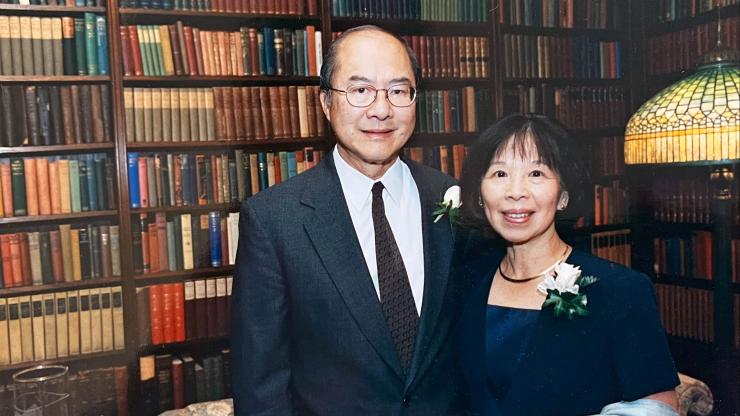
Providing Space for Native Youth to Connect with Their Identities While Navigating K–12 Public Schools
The Indigenous Youth Education Collective is a youth participatory action research project led by—and for—Anishinaabe scholars, community members, and students
Lake Superior State University (LSSU) is over 300 miles and a world away from the University of Michigan, but they both have important roles to play in supporting Native students in our state. Working together in a research-practice partnership, these universities leverage the resources of Indigenous communities and research institutions to create a space for Native teens to connect with their identities and explore academic interests.
Located in Sault Ste. Marie in Michigan’s Upper Peninsula, LSSU has around 2,000 students, and history stretching back to the 1940s. It is also the site of a unique community-driven research-practice partnership developed by Dr. Chloe Kannan (AB ’10), Assistant Professor of Education at LSSU and Jennifer Dale-Burton, an Anishinaabe elder who serves as editor of Win Awenen Nisitotung, the Sault Ste. Marie Tribe of Chippewa Indians community newspaper, and a member of the tribe’s Conservation and Food Sovereignty committees. This program, the Indigenous Youth Education Collective, is a youth participatory action research project led by—and for—Anishinaabe scholars, community members, and students. The Anishinaabe are a group of culturally related Indigenous peoples present in the Great Lakes region of Canada and the United States. Kannan, herself a member of the Sault Ste. Marie Tribe of Chippewa Indians, graduated from the University of Michigan with a degree in sociology.
“I look around at the realities that led to my grandfather dropping out between the seventh and eighth grade,” Kannan explains. “I'm a first-generation college student, and I know how hard it was for me not knowing those systems. I'm seeing these kinds of deficit orientations around being Native from my own students, or being embarrassed of who they are. So I thought, what would happen if we create a space for Native teens to explore and understand both their cultural role and academic possibilities, to better connect with their Native identities, and to create a safe space that helps affirm who they are? What would happen if we create a space to help students grapple with being a Native student in K-12 public schools and help them find their pathway toward college? And what would happen if they learned how to be researchers together and worked on collective issues of change in their community?
“I believe that research-practice partnerships are the pathway to do that,” Kannan continues. “Not just because of access to faculty, but because these students get to feel part of a group that is with the University of Michigan and LSSU and they get to see themselves in college and in higher education, and they can see themselves as part of that in their cultural roles.”
When Kannan began the project with Dale-Burton, she enlisted Dr. Jeremy Wright-Kim, a friend from graduate school, to be her collaborator. “Jeremy and I went to Penn together. We were doctoral students there and we were both interested in issues of higher education,” she says. “I talked with Jeremy and said, we need to try something here. Would you be willing to team up? We need someone with strong higher education knowledge and access.”
Wright-Kim is an assistant professor in the Center for the Study of Higher and Postsecondary Education at the Marsal Family School of Education whose scholarship examines the role and impact of public policy in addressing and/or perpetuating structural inequities in American higher education.
Initially developed as a yearlong pilot study, the project brings community members and Indigenous knowledge keepers together with researchers to engage in coalitional work with sixth to tenth grade Native youth. This work supports their learning of Indigenous ways, helps revitalize community knowledge that has been lost, and allows students to better connect with their Native identities while navigating K-12 and higher education spaces.
“You might think about our group in two ways,” Wright-Kim says, “although they're inextricably linked. We're looking at cultural engagement, cultural identity, and what it means to be Native. The research shows if you can support young students and help them envision what is possible you increase their likelihood of college attendance. We're doing that, but it's not divorced from their cultural identities. On the contrary, it's strongly linked. The research suggests that when students can reflect on their cultural and individual identities and understand how those influence their experiences, especially education, then they're more likely to succeed.”
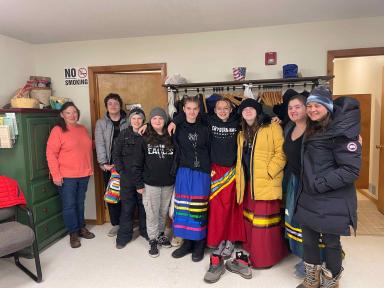
The initial pilot year of the program has been supported by funding from the RISE Indigenous Research Grant Program. The RISE (Research for Indigenous Social action and Equity) Center at the University of Michigan is a multidisciplinary collaborative of humanists and humanistic social scientists dedicated to undoing Indigenous inequalities. The center connects researchers, artists, and activists to develop innovative ways of putting research into action to achieve equity for Indigenous Peoples throughout society. RISE grants support research projects that advance the center’s goal of propagating accurate, expansive, and empowering narratives of Indigenous peoples by Indigenous peoples.
“After I graduated from Penn I came back to Michigan,” Kannan says. “I knew Michigan, but I didn't have the chance to grow up in my tribal homeland. My mom was born here, but then they left because there was no work. I made a promise to my grandma that I would come back to try to make a difference here before she passed away. And so I came here and I became really involved in tribal community work.”
Kannan explains that she “started as a K-8 instructional coach. But during COVID, the schools were short staffed. So I stepped up to teach in the middle school, and it ended up being a gift because I got to know these students well. I knew their families—that's the other thing when you're in education more broadly, but also in a Native community—you really get to know the families in our work. So I was able to reach out to the families, the parents, the students, and talk to them. That's how I recruited the first batch for our program. If you ask the kids, they would tell you they were not friends at the beginning of all of this, but now they're a family.”
“We know that Native students really have historically been oppressed and under-supported by our educational institutions,” Wright-Kim adds. “We also know that engaging in this type of work is generative, helping students identify college-going identities and personalities. And so, what we're really doing is working to construct an experience that is supportive of these students along those lines.”
One thing that Kannan learned from being involved with the community is that “there are a lot of concerns from families and from students around extinction of culture. Obviously in Michigan we have all these federally recognized tribes. But we still are looking at the history of boarding schools which has impacted all of us in various ways. And that legacy, that horrific trauma, has been long-lasting.
“People weren't even able to practice ceremonies until the 1970s,” Kannan continues, “so we've had to survive a lot. Students in these assimilation practices have lost access to their cultural identity and cultural roles. So people would need to have funerals and there were no Firekeepers. I was looking around ceremonies and there were no students. I'm worried about what happens when our healers pass away—who's going to come behind them? So you have that in tandem with students who either don't want to go to college or don't know how to get into college, or are thinking about dropping out of school—and the dropout rate among Native American students is extremely high.”
Through weekly meetings in a co-generative space, the Indigenous Youth Education Collective constructs deliverables and research products directly tied to students’ educational experiences and guides students toward designing studies that would empower participants and their community for local change.
Wright-Kim explains that during the pilot year of the program “it was a weekly engagement where Native youth could come to the program. They would reflect, they would engage in talking circles, they would have support and be engaged in cultural opportunities alongside the community—attending ceremonies, or a sweat lodge, for example. But feeling supportive and supported in their engagement in their Native identities was a really big part of that weekly programming. It also gave them a time to talk about their experiences among one another—finding community in the micro- and macro-aggressions that they're experiencing, the ways in which they're viewing harm in educational spaces, and then empowering them with the research skills to interrogate what that looks like.”
Kannan notes that “these conversations wouldn't be happening amongst my students unless this space existed for them.
“All of our students had summer programs or summer opportunities or internships,” she continues. “One of our students had an independent research internship at the University of Michigan because of this group. Being at the University of Michigan is really generative, and it also provides possibility. There are going to be some kids in our program for whom LSSU is the right place for them. It's a great rural institution. It's small, it's individualized. It's really amazing. And for some of our kids, University of Michigan is a great fit. I think to help all Native students, we need to be doing a better job as a collective of all these institutions in Michigan to give access to students more broadly—because whether they're at LSSU or University of Michigan or Michigan State or Central or Oakland, we've got to be doing more to support Native students, because we are failing.
“In education research, we need to be having more room for research practice partnerships,” Kannan says, “and I think institutions need to be encouraging this. Otherwise, we're not going to be able to do the kind of community impact work and the research that's actually going to create meaningful change in communities. It also encourages us when you have these kinds of partnerships—I'm all the way up in the UP and Jeremy's down in Ann Arbor. It encourages communication and collaboration and not us just being siloed in what's going on with Native students and what's happening in higher education.”
So far, the pilot year of the program appears to be having an impact. “We have students who now know that they want to become Firekeepers who are receiving firekeeping teachings, we have a student who's on his way to becoming a healer,” Kannan says. “And I've had students in my group who didn't want to go to college who now say, ‘I want to go.’ Students who have a better idea of what they want to do in college, who now know that they want—will push their colleges to have—more offerings for Native students: ‘They better have the Ojibwe language. We better have Native faculty. There better be supports that are designed for Native students.’”
